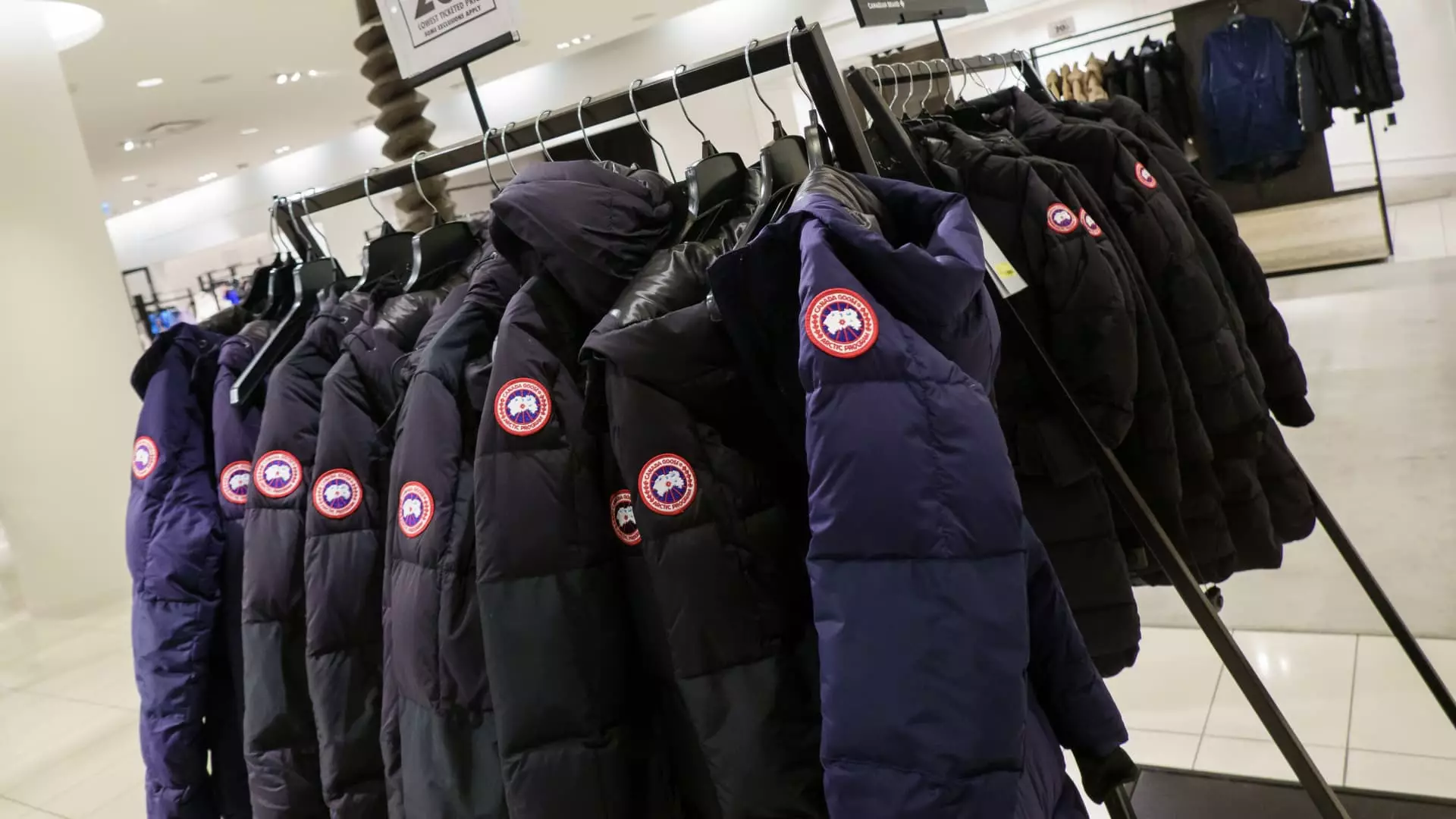When Canada Goose reported its fiscal fourth-quarter earnings, the overwhelming optimism displayed by investors was impossible to ignore. The stock skyrocketed nearly 20%, peaking at 28% during the trading day, reflecting a powerful vote of confidence in the face of significant macroeconomic headwinds. It’s easy to see why; the company’s earnings per share (EPS) reached 33 Canadian cents compared to analyst expectations of just 23 cents. Moreover, revenue figures surged past forecasts, landing at CA$384.6 million, outperforming anticipated figures of CA$356.4 million. Such metrics almost serve as a testament to the brand’s resilience, but the ever-looming “macroeconomic uncertainty” presents a dual-edged sword that has compelled the company to retract its financial outlook for fiscal 2026.
The statement about withdrawing their fiscal forecast should be a wake-up call for both investors and industry analysts. While Canada Goose’s optimism about brand strength and financial positioning is appreciated, one cannot ignore that a company of its stature is wrestling with “dynamic consumer spending patterns.” This suggests that while they have performed well in the fourth quarter, the bigger picture remains unclear. The specter of an unpredictable global trade environment looms large, leading some to wonder whether such rosy earnings are simply a short-term illusion backed by a strong brand image rather than fundamental financial stability.
Trade Agreements and Manufacturing Realities
Canada Goose’s Chief Operating Officer, Beth Clymer, noted that the vast majority of their products are crafted within Canada, making them largely insulated from tariffs imposed by President Trump. While this is certainly encouraging, one can’t help but scrutinize the robustness of this defense against fluctuating international trade agreements. The company’s reliance on North American manufacturing is commendable, yet it does little to alleviate the concerns of market volatility and future production costs. When the CFO recognizes the “indirect effects” on the broader global economy, he is revealing a vulnerability that might not be immediately apparent in the profit margins.
Despite claiming minimal impact from these tariff changes, one could challenge whether this is the calm before a much greater storm. As consumer behavior shifts in reaction to these economic currents, Canada Goose faces the daunting task of maintaining its luxury allure while navigating changes that lie outside of its control. The luxury sector as a whole has leaned into turbulence, faced with slowing sales from industry giants such as LVMH and Gucci. Given the company’s historical narrative of weathering past economic crises, the real question remains: will Canada Goose continue to emerge stronger, or are we witnessing the beginning of a more enduring struggle?
Innovation as a Lifeline
In an effort to diversify and innovate, Canada Goose has ventured beyond its traditional winter wear by introducing products like rain jackets and warm-weather clothing. Their latest move, an eyewear collection powered by AI-enhanced virtual try-on tools, represents a significant milestone and a step towards brand evolution. It emphasizes the company’s acknowledgment of the necessity to adjust to shifting consumer behavior—a reflection of agility and foresight.
However, one must question whether these efforts are a sufficient response to the growing concerns surrounding luxury brands. While the launch represents a commendable ambition toward year-round relevance, will a collection of rain jackets and sunglasses suffice to offset the sluggishness eating into higher-margin winter apparel? In an increasingly competitive landscape, the innovation spectrum is vast, and merely expanding product lines may not guarantee success.
As Canada Goose embarks on what could be perceived as a reinvention, it is essential to dissect the balance between adaptation and keeping the essence of what the brand represents. Striking this balance is delicate; many luxury brands perish by straying too far from their roots. Therefore, while the ambition to broaden their horizons is commendable, creating and sustaining an engaging, cohesive brand narrative amidst such changes is even more crucial.
The daunting nature of the current climate cannot be overstated. With consumer spending habits evolving, and external pressures like trade agreements posing looming threats, Canada Goose’s path forward becomes a complex puzzle. As the brand strives earnestly for relevance and resilience, the market keenly watches whether innovation alone can safeguard its legacy and status as a luxury icon.


Leave a Reply